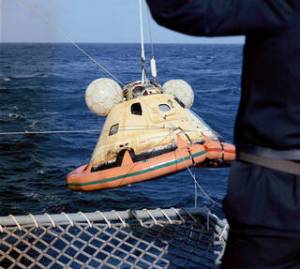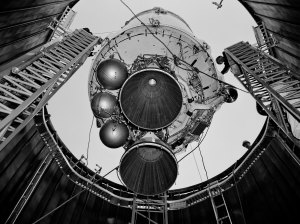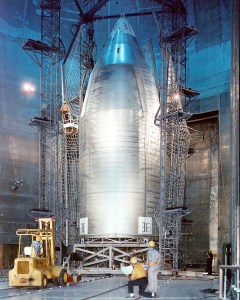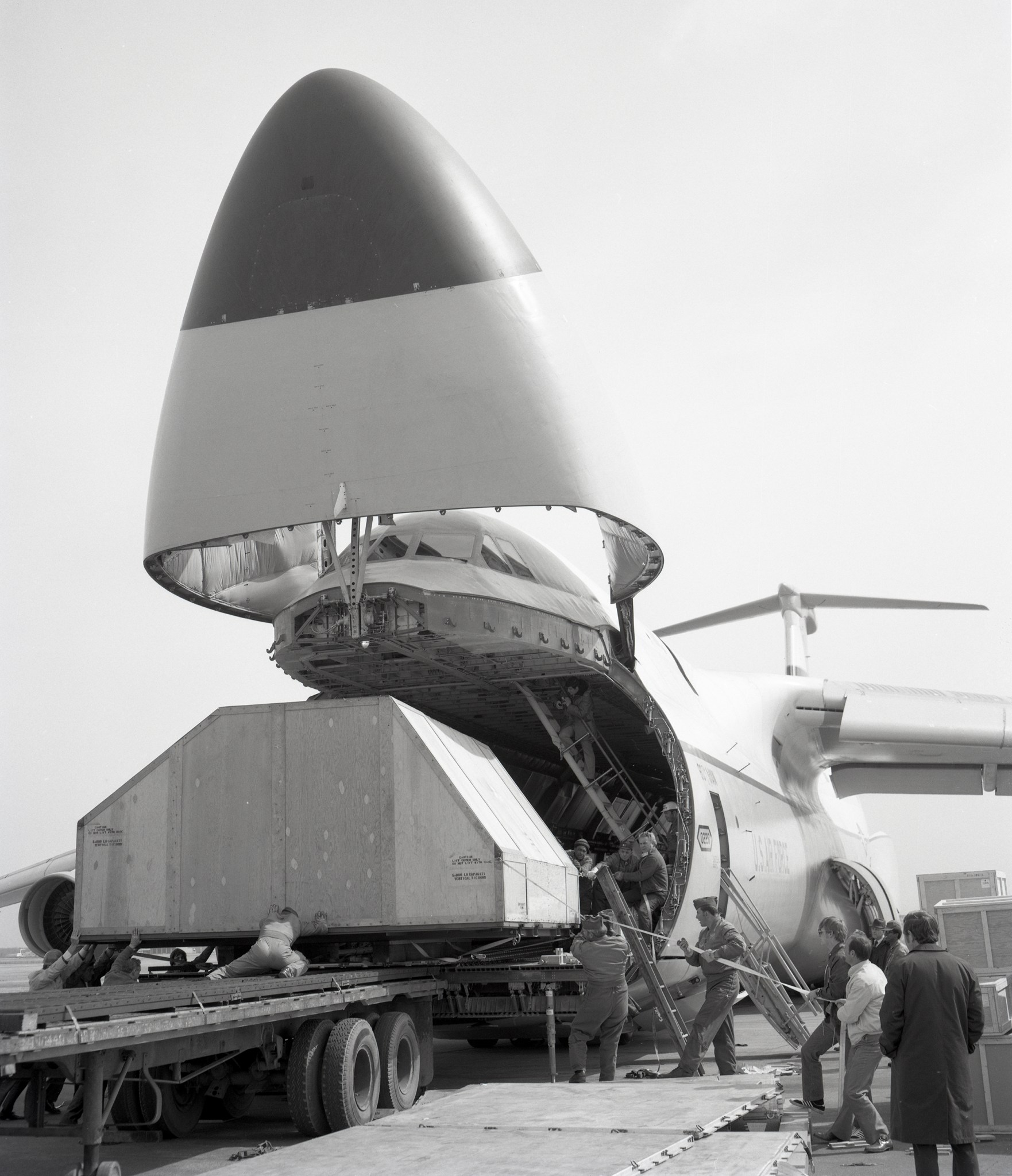
On September 19, 1973, the Lewis Research Center successfully tested a shroud designed for the new Titan-Centaur launch vehicle in simulated launch conditions at Plum Brook Station (today, the Neil Armstrong Test Facility). The test was a critical milestone in the preparation of Titan-Centaur for a series of high-profile interplanetary missions and the culmination of nearly three years of intensive activity at the center.
The Centaur stage was paired with the Atlas missile to a launch series of Surveyor spacecraft which explored the lunar surface prior to the Apollo missions in the late 1960s and several satellites and space probes in the early 1970s. NASA decided to utilize Centaur with the Titan III booster to launch the larger, more advanced exploration missions it had planned for the mid-1970s, including the Viking Mars landers and the Voyager interplanetary probes.
In June 1970, NASA contracted with Lockheed to design a fairing, referred to as the Centaur Standard Shroud (CSS), to protect these large payloads as the vehicle passed through the atmosphere. The CSS differed from the Atlas-Centaur shrouds in that it combined the aerodynamic shielding and insulation to prevent its cryogenic propellants from boiling off in a single unit.
The CSS, with its distinctive bulbous profile, was also heavier, longer, and wider than the Atlas-Centaur shroud, and thus would subject the Centaur to unprecedented stresses during the launch.
Even minor issues during the jettison process could jeopardize the mission. So, Lewis engineers developed an intensive program to verify Lockheed’s load calculations and test the CSS’s jettison and insulation systems.
The center had been testing shrouds for Atlas-Centaur missions since 1964 and had recently tested the Skylab Payload Shroud. The CSS tests, however, would be the most comprehensive, and would utilize both the Nuclear Rocket Dynamics and Control Facility (B-3) and the Space Power Facility (SPF) at Plum Brook Station.
Center engineers and technicians began designing test equipment and preparing the facilities in early 1971. Plum Brook technicians and engineers worked throughout 1972 to install instrumentation, high-speed cameras, and test equipment including large nets to catch the jettisoned shroud halves.
Testing began in September 1972 with a series of runs at B-3 in which the Centaur was fueled to determine the CSS’s ability to keep the cryogenic fuels from evaporating during simulated launchpad operations, and then the shroud jettison system was then tested. In April 1973, a succession of “bending” tests were run at B-3 to verify the facility’s ability to withstand the forces it would encounter during a launch.
The CSS and test equipment were then removed from B-3 and installed in SPF for the heated jettison tests. The SPF, which was the world’s largest vacuum chamber, provided a larger, and more realistic environment to test the jettison system. Plum Brook engineers designed a radiant heater to surround the shroud to simulate the aerodynamic heating that would occur as the vehicle passed through the atmosphere.
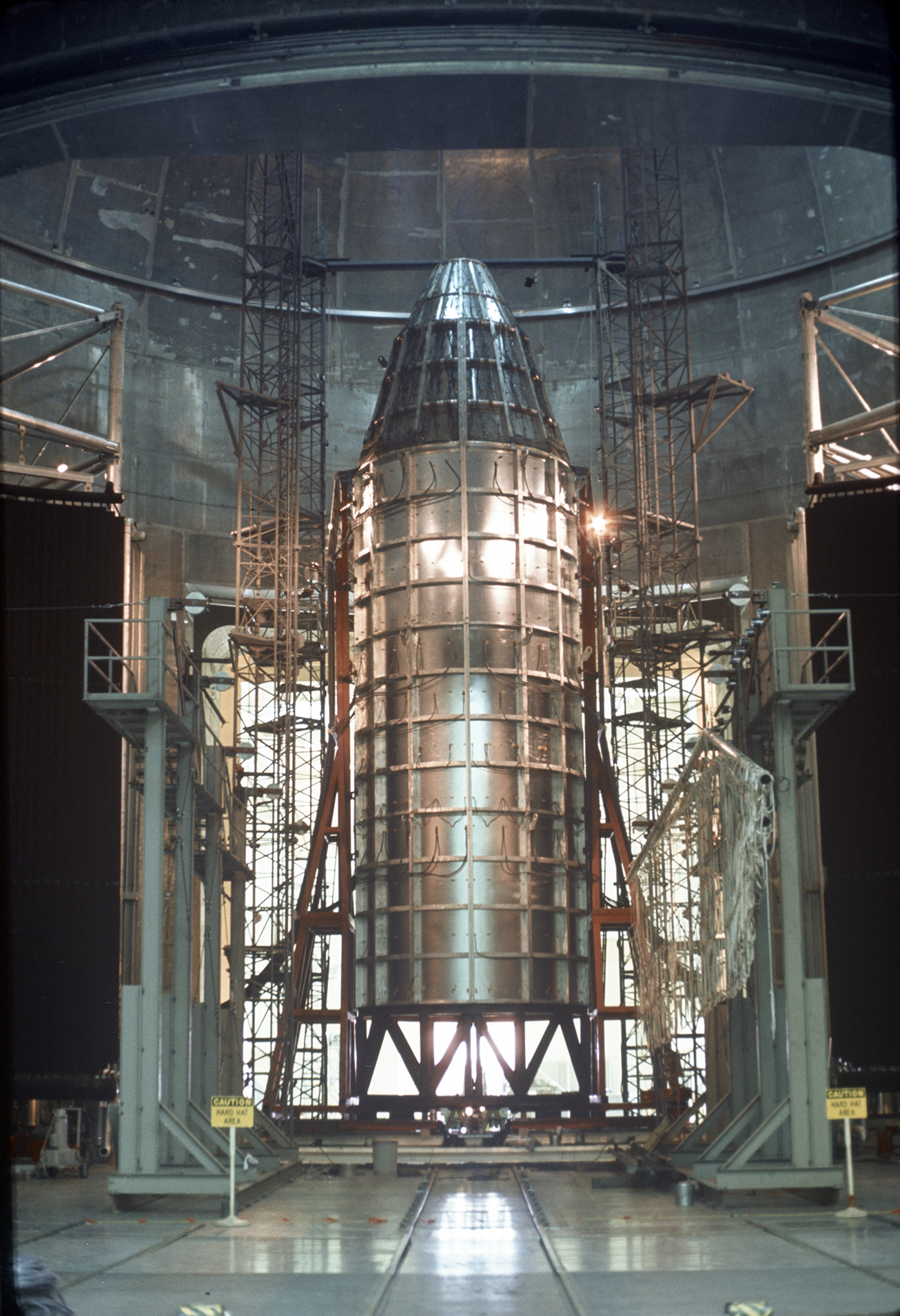
On November 19, 1973, the CSS was subjected to 250 seconds of heating to simulate ascent through the atmosphere, the heater was then rapidly retracted, and the two shroud halves successfully jettisoned into the catch nets. The researchers observed that although the shroud initially moved several inches towards the payload before falling away into the nets, it did not invade the payload envelope. The test was repeated in January 1974 and then run again in March at ambient temperatures.
Lewis’s CSS test program at the B-3 and SPF provided NASA the necessary data on payload clearances, shroud’s structural strength, insulation durability, and the separation system’s effectiveness necessary to proceed with the first Titan-Centaur program.
The CSS performed flawlessly during each of the seven Titan-Centaur launches. These included the Helios spacecraft, which performed the closest observations of the Sun; Viking, the first Mars landers; and the Voyager probes which visited a series of outer planets before continuing beyond the solar system.
Robert S. Arrighi
NASA Glenn Research Center


























